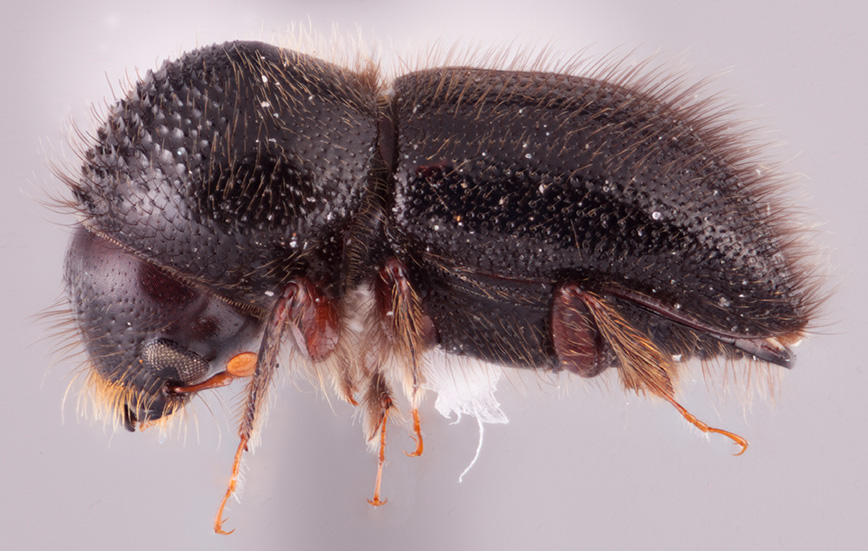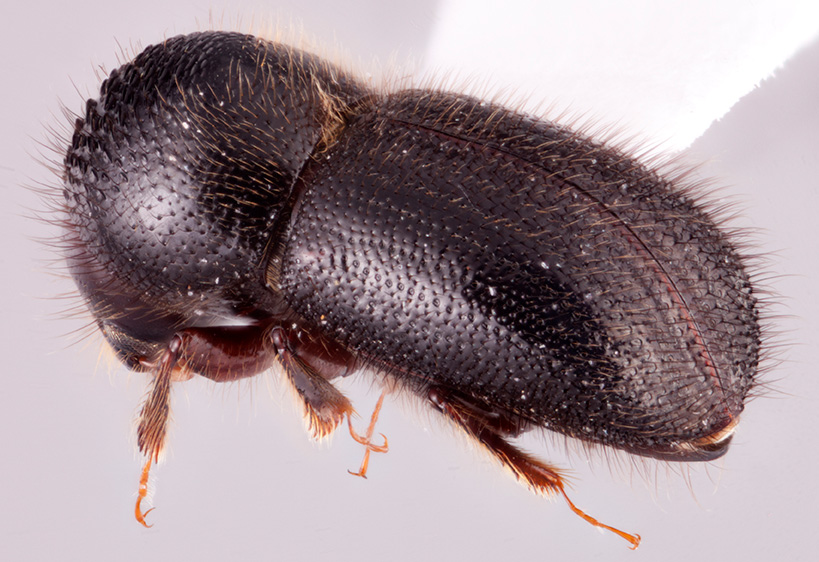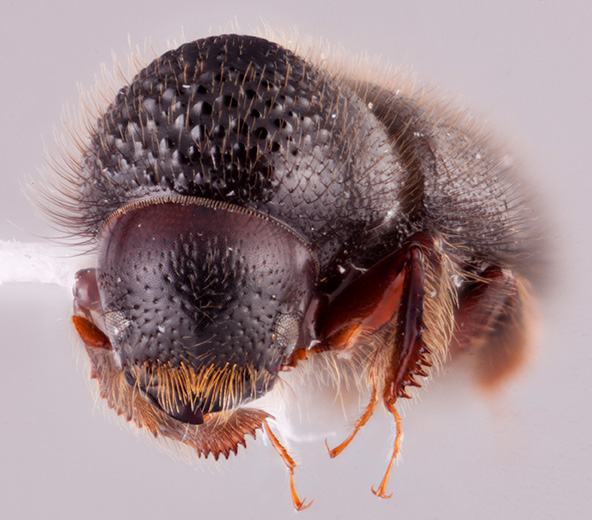Anisandrus hirtus
|
Anisandrus hirtus lateral; R.K. Osborn |
|
Anisandrus hirtus dorsal; R.K. Osborn |
|
Anisandrus hirtus declivity; R.K. Osborn |
|
Anisandrus hirtus frontal; R.K. Osborn |
Taxonomic history
Xyleborus hirtus Hagedorn, 1904: 126.
Cyclorhipidion hirtum (Hagedorn): Wood and Bright, 1992: 700.
Anisandrus hirtus (Hagedorn): Hulcr et al., 2007: 578.
Synonyms
Xyleborus hagedorni Stebbing, 1914: 596 nec Iglesias 1914.
Xyleborus hirtuosus Beeson, 1930: 217. Synonymy: Wood 1989: 175.
Xyleborus hagedornianus Schedl, 1952d: 164. Unnecessary replacement name for hagedorni.
Xyleborus tectonae Nunberg, 1956: 209. Unnecessary replacement name for hagedorni.
Xyleborus hirtipes Schedl, 1969b: 53. Smith et al. 2020b: 98.
Xyleborus taiwanensis Browne, 1980b: 386. Synonymy: Beaver and Liu 2010: 22.
Diagnosis
3.4−4.5 mm long (mean = 3.92 mm; n = 5); 1.95−2.53 times as long as wide. This species can be distinguished by the mesonotal mycangial tuftmycangial tuft:
tuft of setae that denotes the mycangia exterior opening
 the length of the scutellumscutellum:
the length of the scutellumscutellum:
a shield-like sclerotized plate located at the midpoint of the elytral base
; elytralelytral:
pertaining to the elytra
discdisc:
the flat central upper surface of any body part (e.g. pronotum and elytra) convexconvex:
convexconvex:
appearing rounded ; declivitydeclivity:
; declivitydeclivity:
downward slope of either the pronotum or elytra
 rounded, posterolateralposterolateral:
rounded, posterolateralposterolateral:
relating to end of the side part/portion
 margins rounded; declivitydeclivity:
margins rounded; declivitydeclivity:
downward slope of either the pronotum or elytra
 unarmed, surface opalescentopalescent:
unarmed, surface opalescentopalescent:
iridescent, showing vaying colors
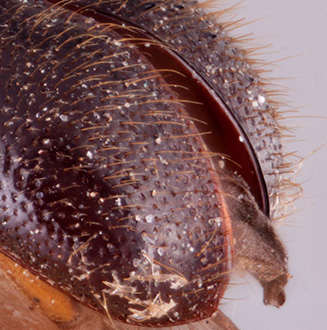 to shagreenedshagreened:
to shagreenedshagreened:
covered with a closely-set roughness, like shark skin 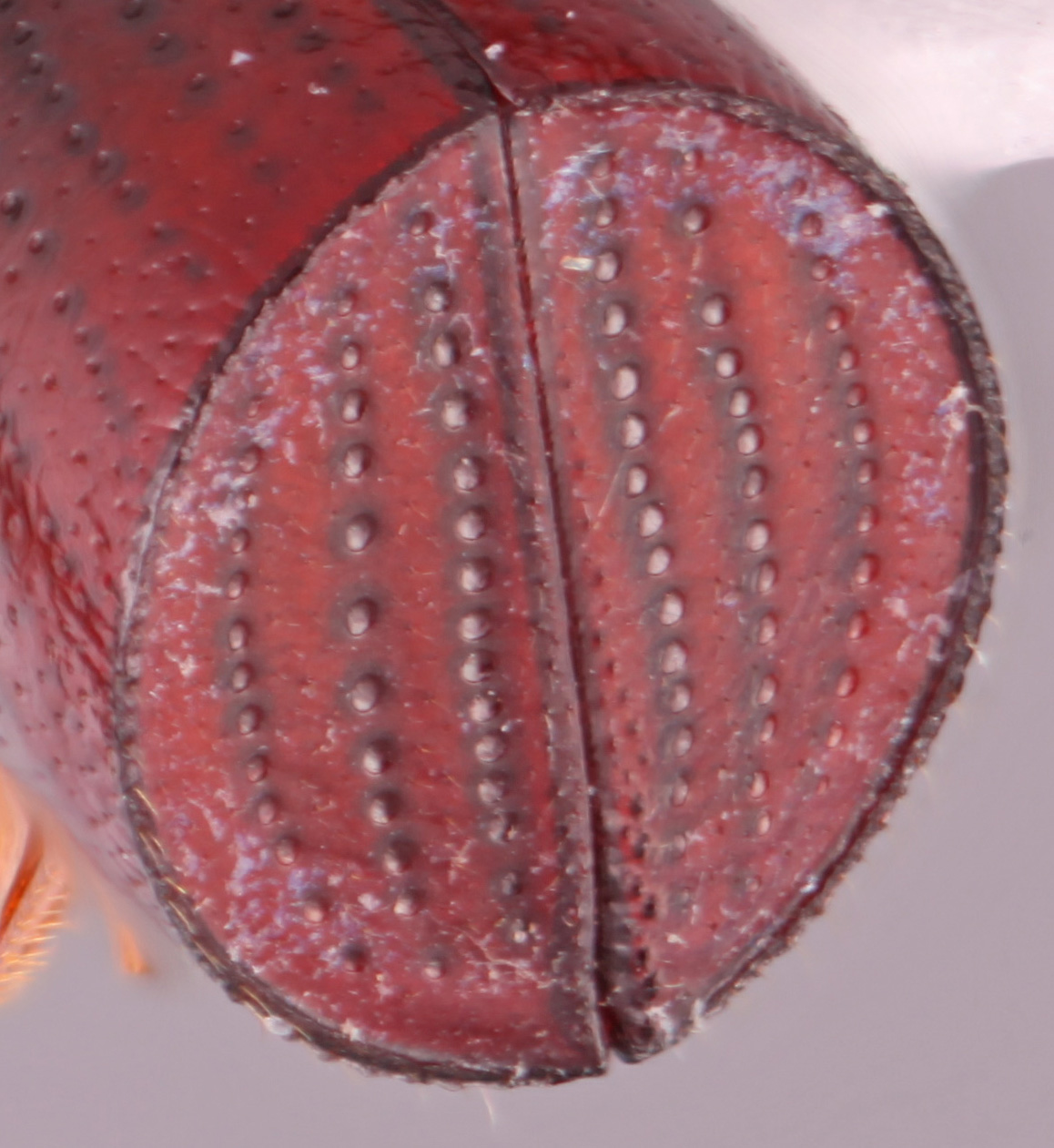 ; declivitaldeclivital:
; declivitaldeclivital:
pertaining to the elytral declivity
striae clearly impressedimpressed:
a depression in a surface
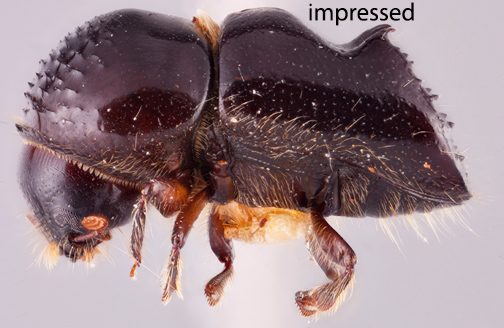 ; and body densely covered by erecterect:
; and body densely covered by erecterect:
pertaining to setae that have their apices directed away from the body and appear straight
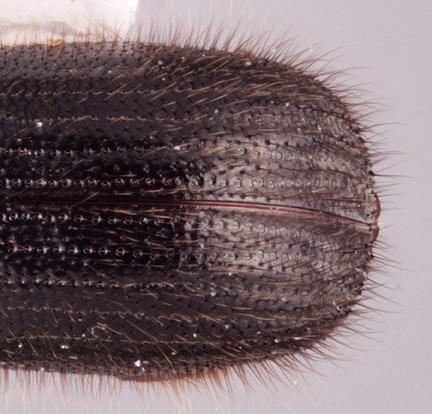 dark brown pubescencepubescence:
dark brown pubescencepubescence:
fine short setae
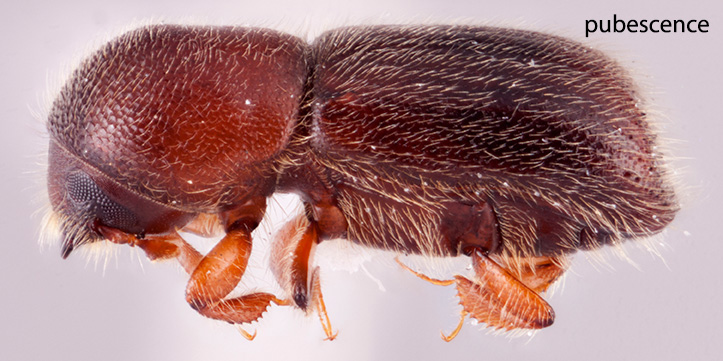 .
.
May be confused with
Distribution
Bhutan, Cambodia, China (Fujian, Guangxi, Jiangxi, Sichuan, Xiazang, Yunnan), India (Meghalaya, West Bengal), Laos, Myanmar, Nepal, Taiwan, Thailand, Vietnam
Host plants
polyphagous, recorded from five genera in five different families (Lamiaceae, Lauraceae, Magnoliaceae, Rutaceae, Symplocaceae) (Wood and Bright 1992Wood and Bright 1992:
Wood SL, Bright DE. 1992. A catalog of Scolytidae and Platypodidae (Coleoptera), Part 2: Taxonomic index. The Great Basin Naturalist Memoirs 13: 1-1533., Beaver and Liu 2010Beaver and Liu 2010:
Beaver RA, Liu L-Y. 2010. An annotated synopsis of Taiwanese bark and ambrosia beetles, with new synonymy, new combinations and new records (Coleoptera: Curculionidae: Scolytinae). Zootaxa 2602: 1-47. https://doi.org/10.11646/zootaxa.2602.1.1)
DNA data
Sequences available for COI and CAD.
COI: GU808700.1; MN619843; MN619844; OP617776
CAD: GU808623.1; MN620136; MN620137; OP607205

